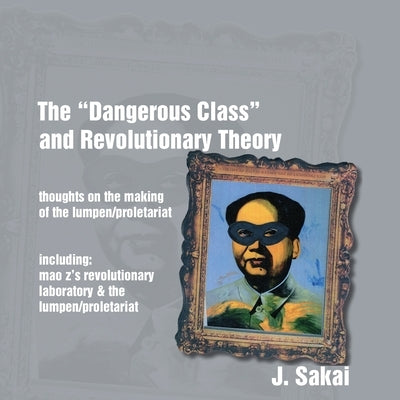Description
This two-part book starts with the paper of that name, on the birth of the modern lumpen/proletariat in the 18th and 19th centuries and the storm cloud of revolutionary theory that has always surrounded them. Going back and piecing together both the actual social reality and the analyses primarily of Marx but also Bakunin and Engels, the paper shows how Marx's class theory wasn't something static. His views learned in quick jumps, and then all but reversed themselves in several significant aspects. While at first dismissing them in the Communist Manifesto as "that passively rotting mass" at the obscure lower depths, Marx soon realized that the lumpen could be players at the very center of events in revolutionary civil war. Even at the center in the startling rise of new regimes. The second text consists of the detailed paper "Mao Z's Revolutionary Laboratory and the Role of the Lumpen Proletariat." As Sakai points out, the left's euro-centrism here prevented it from realizing the obvious: that the basic theory from European radicalism about the lumpen/proletariat was first fully tested not there or here but in the Chinese Revolution of 1921-1949. Under severely clashing political lines in the left, the class analysis finally used by Mao Z was shaken out of the shipping crate from Europe and then modified to map the organizing of millions over a prolonged generational revolutionary war. One could hardly wish for a larger test tube, and the many lessons to be learned from this mass political experience are finally put on the table.
Author: J. Sakai
Publisher: Kersplebedeb
Published: 02/01/2018
Pages: 300
Binding Type: Paperback
Weight: 1.36lbs
Size: 8.40h x 8.50w x 0.70d
ISBN13: 9781894946902
ISBN10: 1894946901
BISAC Categories:
- Political Science | Political Ideologies | Communism, Post-Communism & Socialism
- Social Science | Social Classes & Economic Disparity
- Social Science | Criminology
This title is not returnable

